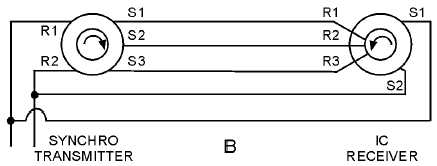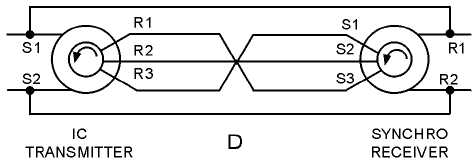4-3
Figure 4-2B.—IC versus standard synchro connections.
Figure 4-2C.—IC versus standard synchro connections.
Figure 4-2D.—IC versus standard synchro connections.
The torque obtainable from either an IC synchro or a standard synchro is determined by the
magnetizing power, which is limited by the allowable temperature rise. When the stator is energized, as in
IC synchros, the magnetizing power can be increased with a resulting larger torque. The reason for this is
that the losses are dissipated in the form of heat around the outer shell of the IC transmitter or receiver. In
standard synchros, this heat loss is dissipated through the rotor, the air gap, and then the outer shell to the
surrounding air.
The electrical zero position for an IC synchro is the position where rotor coil R2 is aligned with the
stator as shown in figure 4-1. To zero an IC synchro, apply the same general theory as we described for
other synchros.





